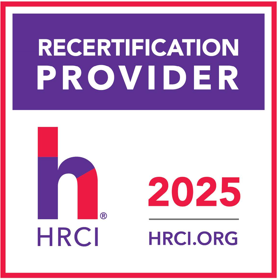
I’ve had the privilege of leading a talent review and succession planning consulting business since 2011 (and as an employee in talent-succession-leadership development before that!), teaching and working with organizations globally about the strategy, tools, processes, decisions and metrics pertaining to these important talent strategies. This has allowed me to take a very deep dive over many years, across all types of organizations, and across different countries into the value and challenges of talent review and succession planning programs, as well as pitfalls to avoid and best practices. In this article, I’ll be discussing common challenges I’ve seen over the years and ideas to address these issues.
Challenge #1: How Can We Communicate the Value of Talent-Succession Planning?
Often it seems that biggest challenge is simply explaining the business value and the process of talent review-succession meetings. So often the value is best understood once an organization participates in their first talent review-succession meetings, exclaiming statements such as “Why haven’t we always been having these talent review meetings?” after experiencing their first session.
Remember that talent review discussions are simply business strategy meetings to plan for the future success of the business, including talent retention issues, succession plans, employee readiness, talent pools, organizational changes and development actions. They are actually the same concept as budget meetings, which plan for future financial needs, except we are planning talent instead of funding or economic issues to achieve future business goals. And isn’t it just as important to have the talent to lead these goals as it is to have the financial assets to achieve the goals?
Talent review-succession meetings are also risk management meetings, just like discussing other risk management issues like cyber security, market risks etc. Remember that talent loss risk is the only 100% certain risk to your organization, because eventually everyone will leave, so why would we not spend time planning for ways to retain top talent and organizational knowledge, and how to prepare employees for future roles? What company has ever said they are “not ready for” having budget meetings or cyber risk management discussions? Why should planning for talent be different from other business strategy, risk management and planning sessions?
It is also important to calibrate succession planning decisions (and high potential and/or key expert talent decisions, if applicable) within the scope of the talent review meetings. So often, it seems that succession planning takes place in individual manager meetings and is not calibrated among the applicable leadership team. I’ve witnessed so many times the value of multiple perspectives of various leaders in the group discussing succession decisions together. After all, if a leader leaves the organization, the successor candidate could well become their next leadership peer in the group, and so their views and data points are important factors in succession decisions.
The business value of a talent review-succession strategy can be communicated initially to the executives and the Board of Directors by completing the Talent Benchstrength “Taking Your Talent Temperature” template (included at the end of this article!), which identifies baseline talent metrics and sets talent goals. This exercise provides the data to communicate the return-on-investment to the organization and works to measure the talent review-succession strategy on an ongoing basis.
Challenge #2: I don’t think we are ready for succession planning…
 Don’t wait until you have the perfect organizational culture, the perfect performance management strategy or the perfect job descriptions to implement a talent review-succession strategy, because these will never be perfect! Additionally, implementing a talent review-succession program will actually serve to improve these other talent strategies. In talent review meetings, leaders are learning how to better identify top talent and successors, how to discuss employee strengths and development action plans. Leaders will obtain data to have better coaching, career and performance discussions with employees, and sometimes leaders start to hire better externally as well, when they realize they need to hire people who can become potential successors for long-term success.
Don’t wait until you have the perfect organizational culture, the perfect performance management strategy or the perfect job descriptions to implement a talent review-succession strategy, because these will never be perfect! Additionally, implementing a talent review-succession program will actually serve to improve these other talent strategies. In talent review meetings, leaders are learning how to better identify top talent and successors, how to discuss employee strengths and development action plans. Leaders will obtain data to have better coaching, career and performance discussions with employees, and sometimes leaders start to hire better externally as well, when they realize they need to hire people who can become potential successors for long-term success.
All organizations are ready for talent review meetings and succession planning. All organizations need talent review discussions and succession planning, rather than leaving talent loss risks and knowledge loss risks to chance. As I always say, you can have a proactive talent review-succession strategy, or you can have the “oh-no-they-left-what-will-we-do?” strategy.
Challenge #3: But we have our leaders plotted on a 9-Box so we are all set…
While the 9-Box tool can be a helpful visual aid during talent review-succession meetings, it is not a required tool and is definitely not the most important aspect of an effective talent review-succession strategy. You want to have more than just “names in boxes” to create an effective and measurable talent review-succession strategy.
Effective and measurable talent review-succession meetings should include:
- Development action plans for employees and successor candidates.
- Vacancy risk assessments and retention actions where appropriate.
- The identification of qualified successor candidates (if the job were vacant today, would this candidate be qualified at least to interview and be considered for the job?) and future successor candidates with gaps to be developed.
- Any action that can be taken to reduce talent loss risks and to retain knowledge, which may be actions such as documenting Standard Operating Procedures that currently just reside in an employee’s head, or cross-training employees, or creating training courses based on an experienced employee’s knowledge.
- Documented notes of the action plans and talent identification decisions made in the meeting, including each employees’ strengths, development areas and action plans.
Challenge #4: We have great talent review discussions but there is little follow-up on action plans after the talent review-succession meetings…
This is probably the most common challenge I hear from those who have implemented talent review-succession programs, regardless of the country I’m in, so it’s a universal challenge. The answer is that we must implement accountability measures for the talent strategy. Think about it this way…have you ever heard a business leader say they are not going to submit a budget this year because they don’t have time for things like that? I doubt that’s ever happened in any organization. This is because there are many built-in accountability measures for leadership budget responsibilities such as:
- Your organization’s budget will be presented to the Board by a specific deadline date, and this is well communicated to all leaders with budget responsibilities. They know they must adhere to budget deadlines in order to meet the Board’s expectations. So, is the same true for presenting your organization’s annual talent report to the Board? Your Board of Directors should be just as interested in the talent planning for the future as they are in the future financial planning of the organization.
- When it is “budget time again” in your organization, most likely this is announced by top senior leaders along with the message of importance, so is the same true for your talent review-succession strategy each year?
- Typically, a business leader’s compensation and/or bonus will be either positively or negatively impacted by how well they adhere to their budget, so is the same true for each business leader’s talent actions and metrics: You can include metrics such as talent retention, development action follow-through, employee engagement ratings, completion of career discussions, performance and/or coaching sessions with employees, completion of talent review-succession actions, etc.
- The budget is something that requires actions throughout the year, not just at budget development time. Leaders typically must submit budget reports during the year and must answer to any significant variations in their budget. So, the same must be true for the talent review-succession strategy; it can’t just be a once-a-year exercise with “crickets” the rest of the year.
I suggest (at minimum) to facilitate development action progress “check-in” meeting with leaders 6 months after the full talent reviews, where only the action plans identified in the talent review are reviewed and discussed to see what progress has been made. Maybe a future successor candidate “with gaps” has completed a development action that has now closed that gap, and now they are a fully qualified successor candidate for that role? Or maybe an employee did not want to take on the development actions assigned and therefore is not actually a successor candidate at this point in their career? Or maybe a busy manager has not yet assigned the development actions to the employee, which also needs to be discussed. These can be short meetings where only development action progress is discussed, so the time investment is minimal.
Challenge #5: How can we better prepare our HR team to facilitate our talent review-succession meetings, and what should we do to prepare the business leaders to participate effectively in the meetings?
Think about how we prepare managers for responsibilities such as interviewing external job candidates, conducting performance reviews, or how to coach employees…we provide training that typically includes practice and role-playing to help ensure managers have the skills for these actions. The same is true for ensuring the business leaders are more prepared for talent review-succession meetings—provide at minimum a “Talent Review Prep” webinar course to discuss how to identify top talent and/or successor candidates, what will be discussed in the meetings, how to conduct a career discussion with employees prior to the meetings, etc.
Now consider the preparation process for the HR team, who will either need to be able to answer manager questions and/or be ready to facilitate talent review-succession meetings. Think about how we prepare an HR employee to teach a training course.
Typically, they first attend the training course they will be teaching, and then they go through a certification process that includes practice teach-backs and/or team teaching with more experienced workshop facilitators, before they are designated as ready to teach the course on their own.
Use this same process for preparing HR employees to facilitate talent review-succession meetings. These employees should attend talent review-succession training to fully understand this strategy, as well as all of the terms, tools, templates, processes, best practices and pitfalls to avoid. Then the employee should attend one or more talent review meetings and serve as a Scribe, taking notes in the meeting, which allows them to observe different situations that can arise in the meetings, as well as providing the important service of documenting the meeting.
Then, when this HR employee facilitates their first talent review-succession meeting, an experienced facilitator is there to serve as the Scribe, taking notes in the meeting. In this way, the experienced facilitator can 1) provide any assistance if needed during the meeting and 2) can provide a coaching session with the new facilitator after the talent review session about what went well, and suggestions for facilitator improvement. I recommend to organizations that they create a type of “internal talent review facilitator certification” process like this in the organization, and only those who have achieved this internal certification are able to facilitate the talent review-succession meetings. It is so important that talent review-succession meetings are facilitated effectively!
At Talent Benchstrength Solutions, LLC, we provide training and consulting services for HR professionals and for business leaders to implement or enhance talent review-succession meetings! We provide Talent Review-
Succession training for HR teams and Talent Review Prep training for business leaders. Check our EVENTS page at www.TalentBenchstrength.com for our upcoming training events or contact Founder Doris Spies today at do***@*****************th.com today!
Don’t miss the Taking Your Talent Temperature examples on the following pages!
Taking Your Talent Temperature Worksheet (With Mock Data)
Instructions: First complete “Step One” of the process to identify your talent baseline metrics. To obtain this data, interview leaders and/or your Board, interview talent acquisition partners, review employee engagement ratings and/or exit interview data, facilitate employee focus group sessions, and review your HR system data. After completing these questions, complete “Step Two” on the next page, which documents your Talent Benchstrength® Goals and Metrics to complete the process.
| Talent Diagnosis Factors | Baseline Metrics | What is the business impact of this factor (high, moderate, low)? Add notes as needed. |
|---|---|---|
| What is your current average time-to-fill for leadership roles? | 92 days on average | High – we have a difficult time recruiting leaders externally due to the complexity of our industry. |
| What is your current percentage of internal candidate versus external candidate fill of vacant leadership roles? | 25% internal fill of leadership roles, 75% external fill | High – it would be easier to promote leaders internally who already know our business, and it would help us to retain top talent. |
| What is your annual talent acquisition budget? | $1.7 million | Moderate – we want to reduce this expense if possible. We hire about 100 employees per year, so we spend about $17,000 on average per hire. |
| What is your annual leadership development/talent benchstrength budget? | $450,000 | Moderate – we spend on average $450 per employee on talent development. Compared to our talent acquisition spend, we are spending far more on our shiny people than on our trusted employees. |
| What is your turnover rate of leadership employees (those with employees reporting to them)? | 29% on average over 3 years | Moderate – this rate is on par with our industry. However, if we were able to promote more internally, we could potentially reduce this rate. |
| What is your annual spend for external talent search firms? | $500K | Moderate – this is a large expense; if we were able to reduce this expense, we could use the funds to enhance training and leadership development. |
| What is your employee engagement (and/or exit interview) score relating to employee career-development satisfaction? | 3.4 on a scale of 1 to 5, with 5 being a top score | High – this metric refers to our employee engagement question: “Do you see a career path at Company XYZ?”. This was one of the top 5 lower scores on our employee engagement survey last year. |
| What is the diversity of your current leadership team? | Females – 22% Minority – 29% |
High – these current metrics do not align with our diversity goals. |
| What percentage of your leaders will be retirement eligible within the next three years? | 8% | Low – in our organization, this is currently not a major issue to plan for, although we still want to ensure succession plans for leaders because retirement is only one vacancy risk issue. |
| What percentage of your leaders took a lateral or promotional career move in the last year? | 30% | Moderate – this metric was higher than expected, but we still want to enhance this, and to encourage more cross-functional career movement. |
| What percentage of vacant leadership roles last year were filled by an identified successor candidate (if known)? | 40% | Low – for our first-year metric after our first talent-succession meetings, we were pleased with this result, but over time this needs to increase. |
| What percentage of leaders have at least one identified Qualified Successor candidate (if known)? | 29% (but only 12% in executive roles) | High – This is a top issue, to develop more Qualified Successors. Fortunately, our retirement metric is low, so this reduces this concern, but it takes longer to develop Qualified Successors for top leader roles. |
| Do you have the most appropriate external talent acquisition vs. internal talent benchstrength staff? Determine the ratio of each staff member to the number of employees hired per year vs. number of current employees. | Acquisition: 8 Benchstrength:2 |
Moderate – We have a combination of 8 employees/contractors hiring an average of 100 employees a year, and 2 employees/contractors who are responsible for talent review-succession and for all training and development. Can any of the 9 talent acquisition staff also learn to help facilitate Talent Review-Succession meetings? |
| Business Issue | Talent Goal(s) | Baseline Metrics to focus on | Year 1 Target Metric | Year 2 Target Metric |
|---|---|---|---|---|
| Top talent is discouraged by a lack of career growth opportunities, resulting regrettable resignations, and it takes too long to fill their open positions. | 1. Increase internal fill of open leadership roles to retain top talent. 2. Decrease the time-to-fill leadership roles 3. Identify and develop more successor candidates. |
Current internal fill of leadership roles – 25% Current career growth employee engagement rating – 3.4 Time-to-fill (vacant role to onboarded employee) – 92 days Percentage of leaders with at least one Qualified Successor – 29% |
Internal Fill of Leadership Role Target – 30% Employee engagement rating (for career growth) – 3.6 Time-to-fill – 80 days Leaders with at least one Qualified Successor – 40% |
Internal Fill of Leadership Role Target – 40% Employee engagement rating (for career growth) – 4.0 Time-to-fill – 70 days Leaders with at least one Qualified Successor – 50% |




